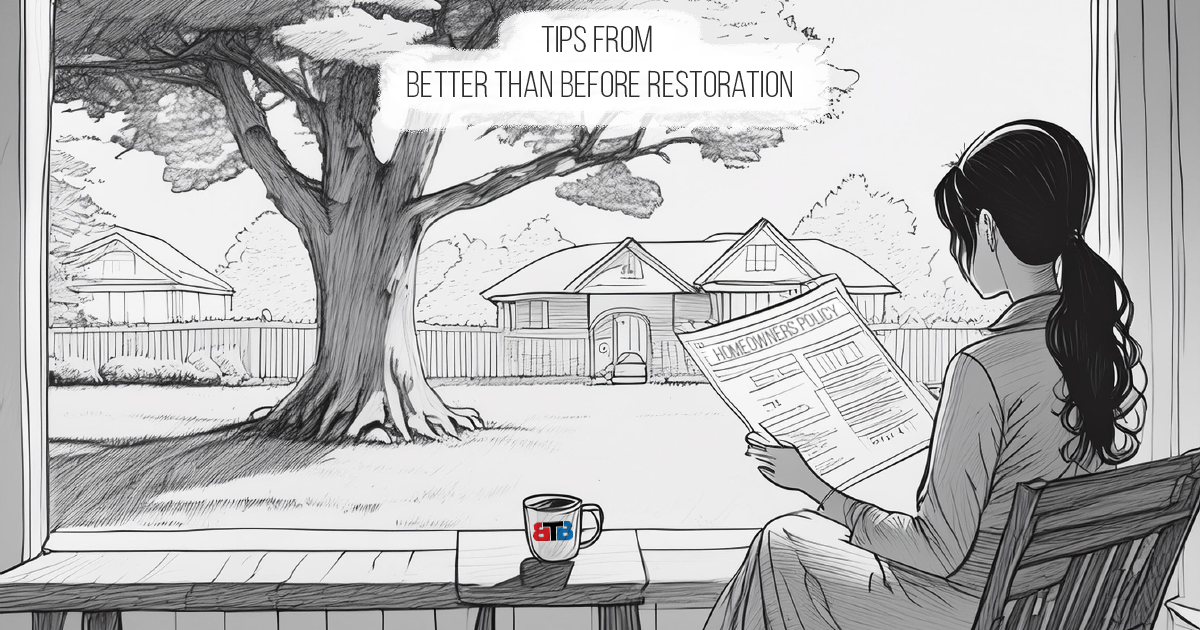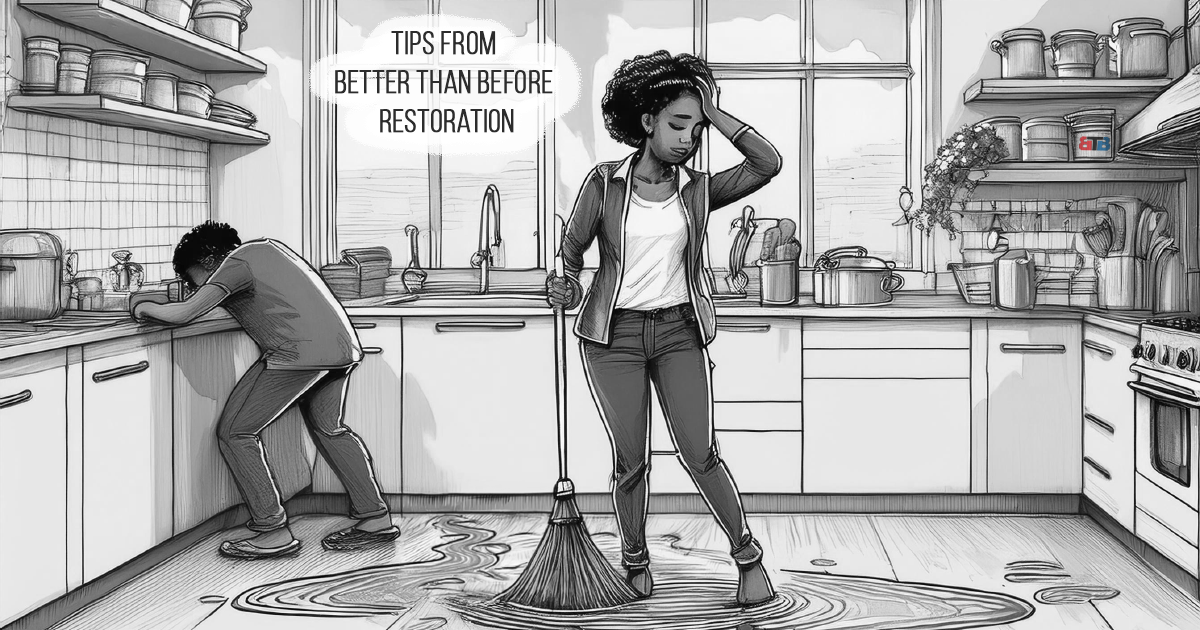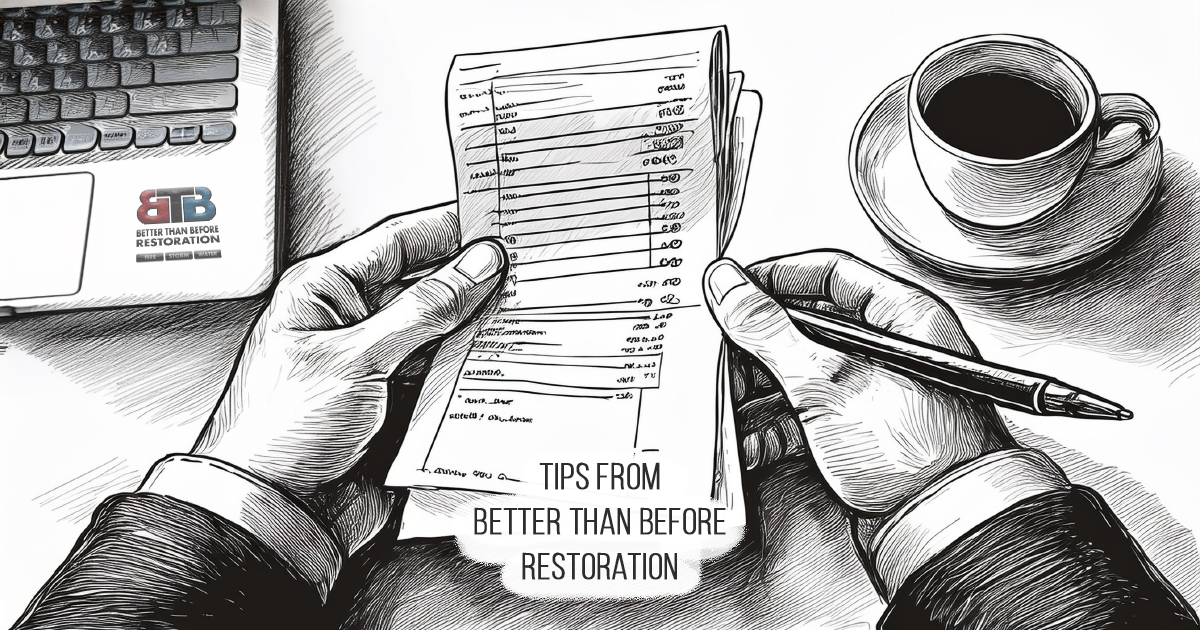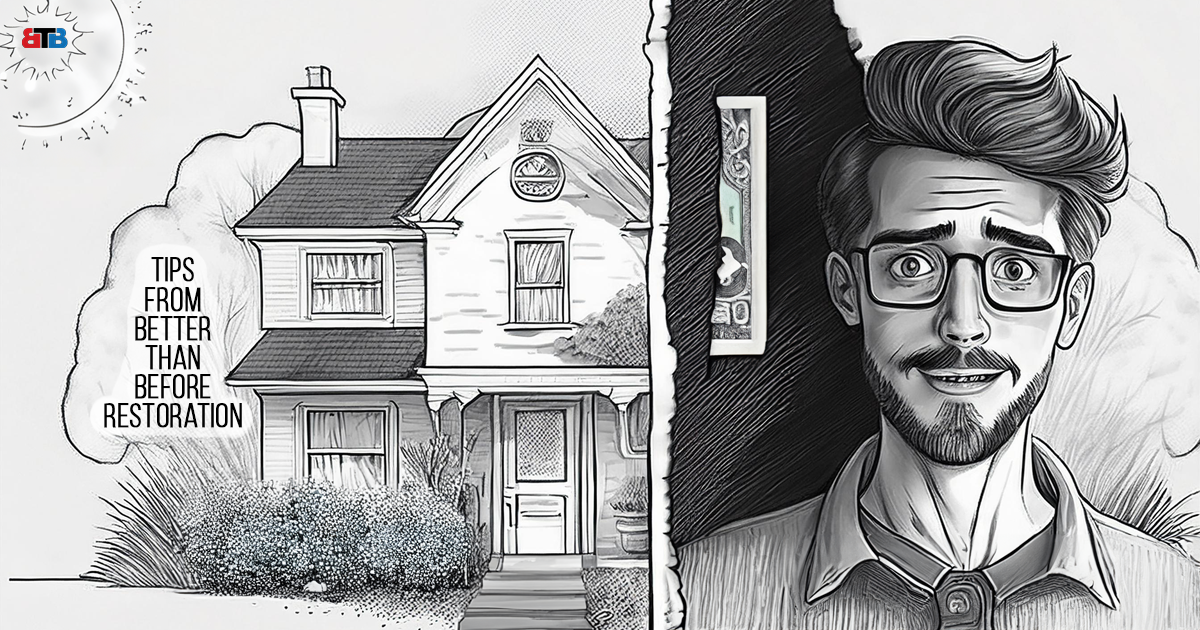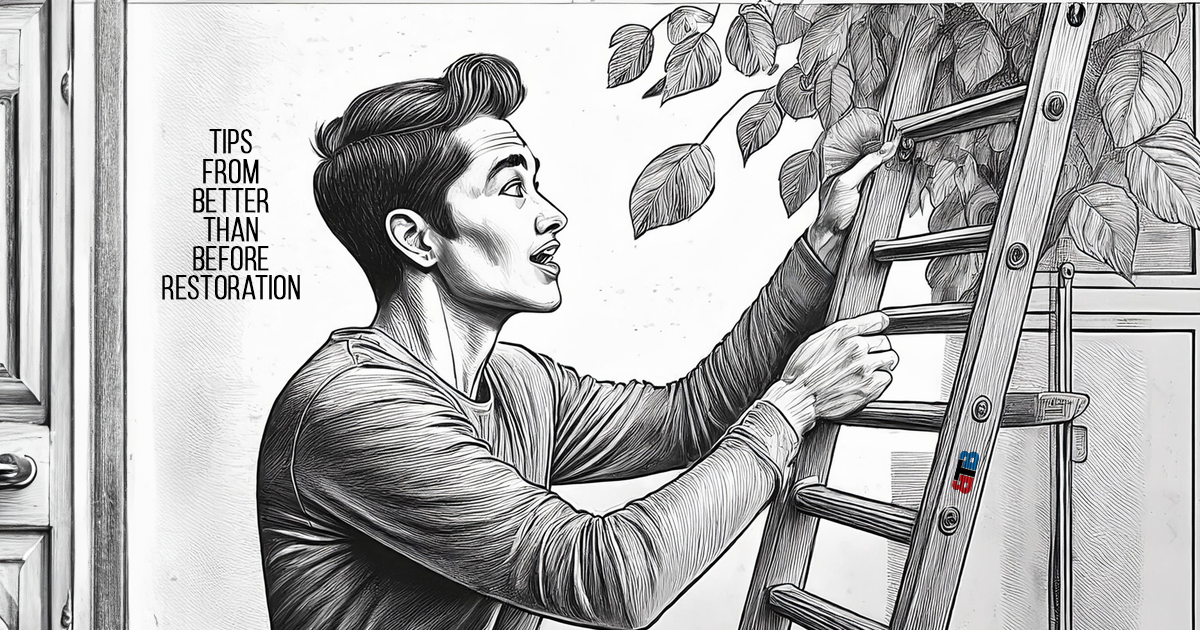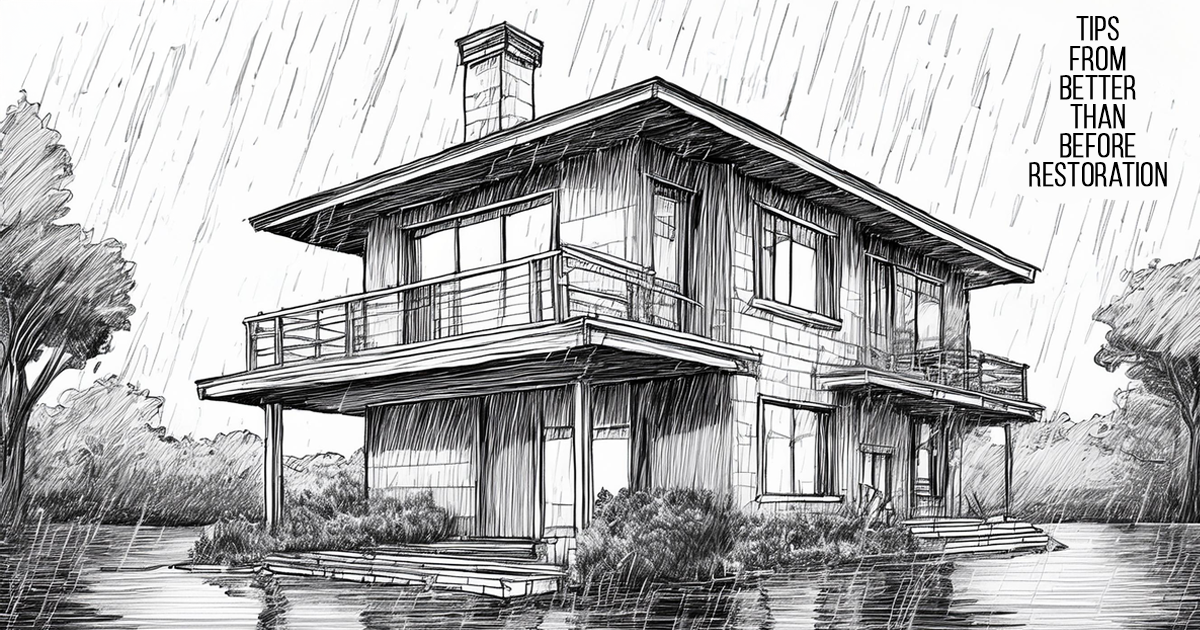Tips from Better Than Before restoration
Homeowner Insurance policy tips:
Understand your homeowner Policy
Did you know?
Many homeowners policies do not cover flood damage, requiring separate flood insurance for full protection. Same goes for Earthquake damage.
Understand Your Policy:
Familiarize yourself with the specifics of your homeowners insurance policy. Know what types of damage are covered, such as fire, storm, or water damage, and understand any exclusions. This knowledge will prepare you for what to expect during the claims process and help you avoid surprises. Many of the agents we work with welcome a review of your policy. If you have questions, don’t hesitate to reach out to them!
At Better Than Before Restoration, we have on staff a former insurance agent and a Licensed Property Adjuster. We have a good idea of what to look for when you have damage to your home, but the details of your policy is best to be reviewed with your insurance agent.
Document Everything
Did you know?
Detailed documentation can expedite the claims process by providing clear evidence and reducing back-and-forth with your insurer.
Document Everything:
Keeping meticulous records is crucial. Save all communications with your insurance company, including emails, letters, and phone call logs. These records can serve as evidence if any disputes arise and ensure that you have a clear timeline of the claims process.
Side Tip:
Document everything before a claim. As an insurance agent, I would always tell my policyholders to video and/or take photos of everything they own. Think about it. How hard would it be to list everything you own by memory if you were to have a complete fire loss? Also, be sure to take pictures of serial numbers from your items if available.
Mitigate further damage
Did you know?
Failure to take immediate action to mitigate damage can result in reduced claim payouts or even denial of your claim.
Mitigate Further Damage:
To prevent additional loss, take immediate steps to protect your property. This might include covering a damaged roof with a tarp or shutting off the water supply to stop a leak. Insurance companies expect homeowners to act responsibly to minimize further damage.
Side note:
Many policies do not cover mold anymore. If a water leak has been going on awhile, it is possible that could be looked at as a slow and repeated instance and not a sudden and accidental discharge of water. An area that is affected by water for an extended period of time can develop mold eventually giving evidence of extended water leaking over time.
Mold needs 3 main things to produce and grow. 1.) moisture, 2.) absence of light, and 3.) a food source like wood, drywall, and/or clothes.
It is advisable to take prompt action to stop the leak and clean up what you can. If the amount of water is too much, a water mitigation company can help. You can call Better Than Before Restoration to help guide you through the process.
Keep receipts
Did you know?
Most homeowner insurance policies include coverage for additional living expenses (often referred to as ALE), which can cover costs like hotel stays and meals if your home is uninhabitable.
Keep Receipts:
Save all receipts related to temporary repairs, cleaning, and additional living expenses incurred due to the damage. These costs may be reimbursable under your insurance policy, so detailed records are essential.
know your deductible
Did you know?
Higher deductibles can lower your premium, but they also increase your out-of-pocket expenses in the event of a claim.
Know Your Deductible:
Side note:
Ask your agent if you have a claims free discount tied to your policy. If you do, this discount could go away once you file a claim, even if the insurance company doesn’t pay you a dime towards the repairs. The result is a higher premium. It’s worth calling a contractor like Better Than Before Restoration to see what their thoughts are before filing.
Understand claim types
Did you know?
Understand Your Claim Types:
Side note:
An insurance adjuster will likely pay out the ACV amount in one check. Then, once the repairs are finished, a separate check for the recoverable depreciation will be paid. If a mortgage is involved, then likely those checks will go to the mortgage company and they will disperse funds according to their policy.
Understand policy limits
Did you know?
Understand Policy Limits:
Side note:
Cost to build back is not the same as the market value. You can have a house that is in a neighborhood on an acre of land in Florence, AL and the market value of the home is not the same as the same exact house in Florence that is on the river with 5 acres of land. Same cost to build back the home, but selling both would be a totally different number.
maintain your home
Understand exclusions
Did you know?
Every insurance company has exclusions on their homeowner policies. Knowing these exclusions can help you understand what to expect if you are thinking about filing a claim and will help you plan accordingly.
Understand Policy Exclusions:
Side note:
Let’s build back your home better than it was before
Service Locations
Northwest Alabama and Southern Middle Tennessee
Phone
(256) 740-FIRE
claims@btbrestoration.net

